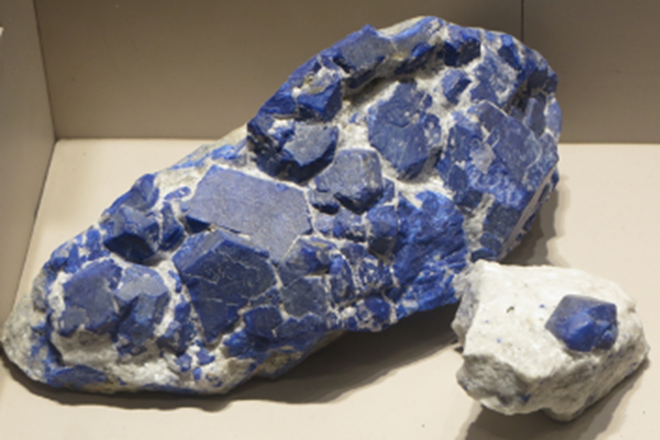Lapis Lazuli

Credit: Lapis Lazuli by Heather McCune Bruhn, Penn State University, licensed under CC BY-NC-SA 4.0
Resource Description
Lapis lazuli is a bright blue semiprecious stone, first known only in remote mountains in Afghanistan and Pakistan, and more recently in Brazil. This module explores lapis lazuli's use first in the production of high status objects in the Ancient world (Ancient Near East, Rome, etc.) and then its use as an expensive blue paint pigment. Since the process for extracting ultramarine blue pigment from lapis lazuli is so long and labor intensive, true ultramarine is still one of the most expensive pigments in the world. You will be able to read about and watch videos detailing the ultramarine extraction process, as well as the production and use of some alternatives to ultramarine blue.

